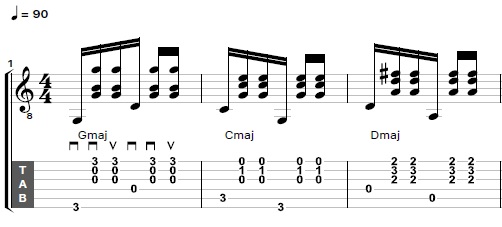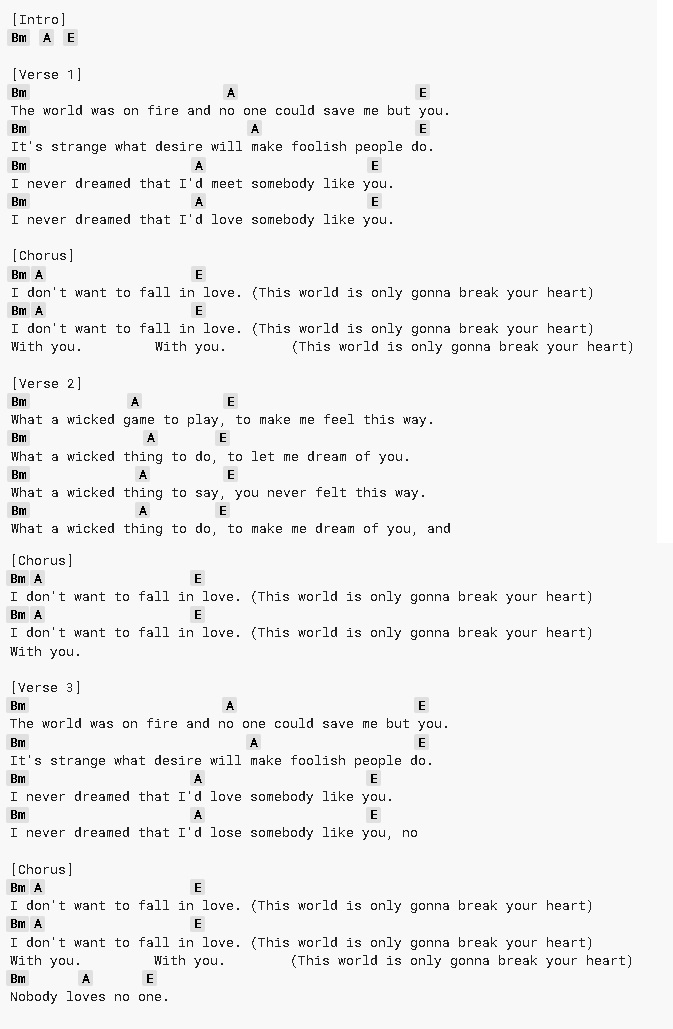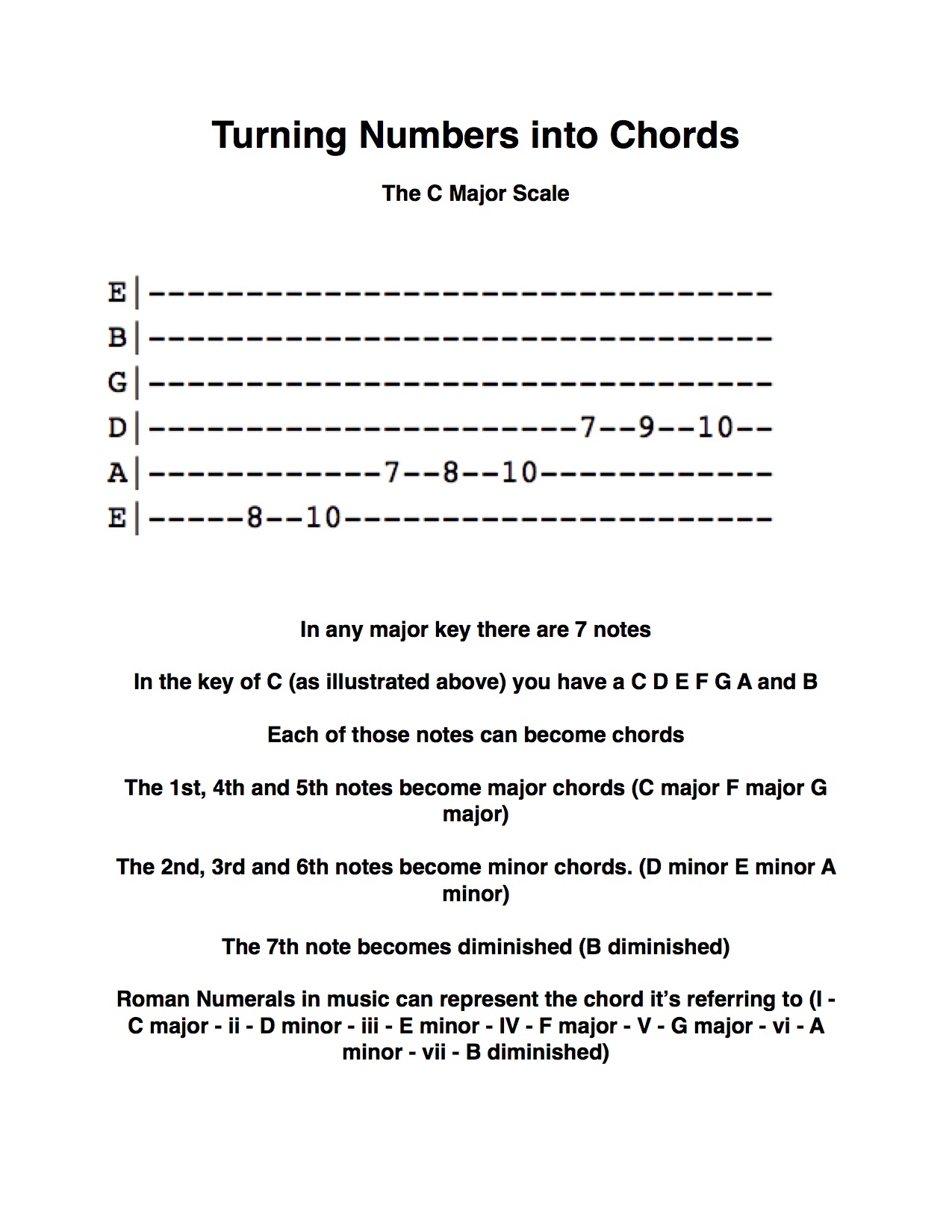Sean Daniel here with Guitar Control. Super stoked about the lesson today, “One” by U2. One of my absolute favorite songs ever. One of my favorite ones to play live because it really translates well to an acoustic guitar version.
So today, we’re going to be learning a version that has the riff over the chords and then just really the chords and structure of the song, so make sure you check the image above to follow the chords and tabs. because it’s going to have the chords for everything we’re doing here. And then we’re just going to go through some of the shapes and basically it’s going to sound like this.
[contentwall] [/contentwall]
[/contentwall]
[ninja-popup ID=715]
A minor, 1st fret, pointer finger on the B-string. Ring finger, 2nd fret, G-string. Middle Finger, 2nd fret, B-string. We have to get your pinky involved in this one, okay? So as soon as you put your pinky on the 3rd fret of the B-string, this makes an A suspended 4 chord. But we’re not looking at it as a different chord. It’s an inflection of an A minor chord.
So if you look at the chords, it’s really just A minor to a D suspended to an F major and then to G. Now, the fingering is actually pretty important for doing this and this is really a great lesson and just kind of inflecting different open chords. When I say that I’ll get an inflection is when you take an open chord and then just kind of do a little riff on top of it. Technically, it’s changing the cord, but also getting a lot of the melody that we’re used to. And this song is a great example of that.
I think the best way to do this is just look at the melody first. I’m just hitting the open E-string. Then the 3rd fret. Then the 1st fret and 3rd fret of the B-string and then back to the open E-string again and then three, one on the B-string, right? Now, we can have that over the chord.
It’s really a great way to kind of focus in on the melody of a chord. Then instead of just getting A minor sound like … Really cool. I think you can hammer-on the first part of that A minor, D-string, open two, then G. That leads us right into the D suspended 2 part of it.
So now if we have this A minor, and remember we’re inflecting it with your pinky on the B string, third Fret. Now, if you just leave right here, that right there, the bottom four strings is a D suspended 2 chord. Open D, two G, three B, open E.
Then now, we can kind of go back and forth between the nice melody. It’s just three, one, three, one, three, one on the B string. But over a D suspend 2 chord sounds like. All right. We’ve got D, F. It’s really the same melody as the first part, but now it’s over a different chord. Okay? So really cool kind of way to see how the underlying chords or something totally changes the sound of it even if the melody stays the same.
So now if we have this F major chord, ring finger, three D. Middle finger, two G. Pointer finger, one B. And then use your pinky just to hammer-on and off of the B-string, you’re going to get that sound like that. And then we switch it to a G.
The G is really easy too. It’s just a regular G major chord. Three E, 2A, open D, open G, 3B. I kind of like playing that three open. I think it’s just easier. You can do that there too.
You have kind of options on how you want to do it. Again, this is just an acoustic version of this song. It’s really up to you how much like the electric version you want to get, but we have the A minor to the D. Then you have a G, or the G. They both kind of work. All right.
This is kind of like a way of finding the shapes that you’re comfortable with. To do the G where you pull off, you have to have your ring finger on the 3rd fret of the E-string, your middle finger on the 2nd fret of the E-string. But, just different options, okay?
This is the entire verse. A minor, D suspended, F, then G. Or A minor, D. Really, even if you just strum the chords by themselves without the inflections, you still get the structure of the song. But I think it’s really a great opportunity to start working out some of those inflections.
After that, we go into the chorus. It’s a C to A minor, to F, to a C. Okay. I want to number these. We are in the key of C. Seven different notes in the key of C. C, D, E, F, G, A and B. And the best way to talk about chord progressions, how they fit together is to assign everyone of those notes and numbers.
C being one, D being two, three C, F is four, G is five, A is six, B is seven. Okay? So on and so forth. The best way to remember C, A minor, F, C is one, six, four, one. Then we can actually go back to the chorus with the same thing. A minor being a six. D is a two. F is four and G is five. Six, two, four, five.
Now, you might notice in that progression it’s like, well, there’s no one in that chord progression. Which is why when you hit the C chord in the chorus, it just sounds so right. That’s when the message that Bono was trying to give us all is relayed. Best Way to remember that it goes to the c major on the chorus is what’s the name of the song, One. Go to the one chord. When in doubt, go to the one. Oh, it just sounds so good. It ties all together, right?
I guess you can call the chorus or the pre-chorus that one to six, to four, back to one. Now, the last time around, it goes one to six, one to six, one. And then this is where it changes. Okay. I think the best way to do this is to follow along with the chord chart and then look at the lyrics too. (singing) Go to the five and four. I can’t keep holding on, right?
I think that’s a good way to kind of like tag a number to a lyric, because when you go from (singing) … Four. (singing) Again, those aren’t the lyrics. It’s just the chords that go along with it.
The one kind of variation is when they just go from a one to a six and one to a six, then the part where he’s going to the temple. Think of that as the five chord and then can’t keep holding on to four. Then back to one and then we just ride it out on that one, six, four, one progression.
So excellent song. A great message overall. But a super fun acoustic guitar song to play because you can add the fun parts of the electric guitar into it. Then start thinking about numbers and chord progressions, because that’s the best way to really start learning any kind of song and remembering how it goes and then start tagging certain chords with lyrics in your head because then eventually to able to maybe perform them.
Even if you’re not singing along with it, you can do it in your head because it’s a better way to do it. Yeah, I know this is the part that goes to the five for the G, to the big part there that goes to that four chord. I know that, that sets up the way home to the one chord.
Definitely a fantastic song. Specifically just learning riffs, inflections, and chords, and just chord structure and stuff too. Let us know what you think. Let us know if you want to see any other U2 songs because I think there’s a really great opportunity to turn some of those really cool atmospheric songs into acoustic representations.
Make sure to click on the other videos around here by myself, other great Guitar Control instructors. Make sure you click that link below to grab the chords for the song so you can play along and then just rock it out and let us know what you guys want to see more of. Thanks a lot.



